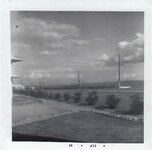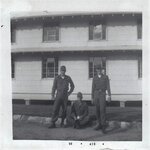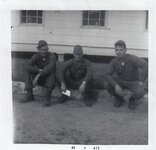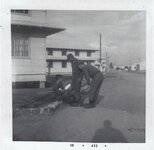My grandson asked me if I could fix his music stand so he could practice clarinet. One of the original rivets had pulled through. We took it down to the garage and I fixed it with a Pop Rivet.
Although I didn't train in Pop Riveting, I learned it by accident at AIT. When I finished my AIT early, they couldn't just let me go. I had to wait for the next graduating cycle. So in the meantime, they had me in holdover status and would detail me out on post as free labor. One day, I was sent out to work with a civilian employee at post engineers. The work that day was repairing window screens and screen doors. Many of which had been trashed by drunken soldiers. These were aluminum framed screens, the old Mexican whom I was working for introduced me to the Pop Rivet system that day. It was a good lesson for the future. I've used Pop Rivets for many small metal repairs over the years.
Although I didn't train in Pop Riveting, I learned it by accident at AIT. When I finished my AIT early, they couldn't just let me go. I had to wait for the next graduating cycle. So in the meantime, they had me in holdover status and would detail me out on post as free labor. One day, I was sent out to work with a civilian employee at post engineers. The work that day was repairing window screens and screen doors. Many of which had been trashed by drunken soldiers. These were aluminum framed screens, the old Mexican whom I was working for introduced me to the Pop Rivet system that day. It was a good lesson for the future. I've used Pop Rivets for many small metal repairs over the years.
















